Third Day
We got up at 7:30 again, had breakfast and headed to visit the famous Karlstejn castle. We had the English guide tour just for us. It was very enjoyable, and very interesting. Unfortunately the Chapel was under reconstruction, so we could not visit it.
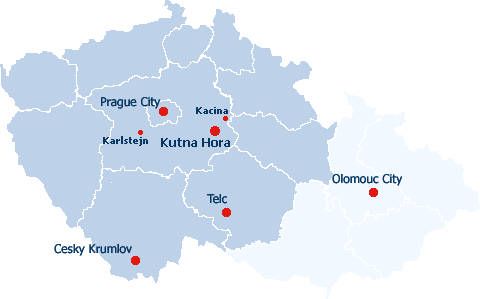
Karlstejn
High Gothic castle founded in 1348, which has a unique position among Czech castles. It was built by Czech King and Roman Emperor Charles IV as a place for safekeeping of the royal treasures, especially Charles's collection of holy relics and the coronation jewels of the Roman Empire. The first stay of Charles IV in the castle is documented in 1355 when he came to supervise the building works as well as the decoration of interiors, especially the castle chapels. The construction of the castle was finished in 1365 when the Chapel of the Holy Cross situated in the Great tower was constructed. At the outbreak of the Hussite wars the castle became the place for safekeeping of the Czech coronation jewels, which were kept here, with the exception of several short-time breaks, for nearly 200 years. The castle was reconstructed in late Gothic style after 1480 and in Renaissance style in the last quarter of the 16th century. The present appearance of the castle comes from the last reconstruction, which was carried out in the purist neo-Gothic style by architect Josef Mocker at the end of the 19th century. Very impressive is the original step-like order of buildings. From the Well tower and Burgrave's palace located as the lowest you walk up to the majestic five-storied Imperial palace and further up towards the Marian tower. And finally at the top of the headland stands the monumental 60m high and separately fortified Great tower.

(http://www.hradkarlstejn.cz/)

Karlstein today
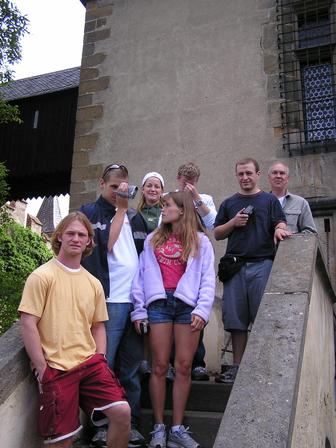
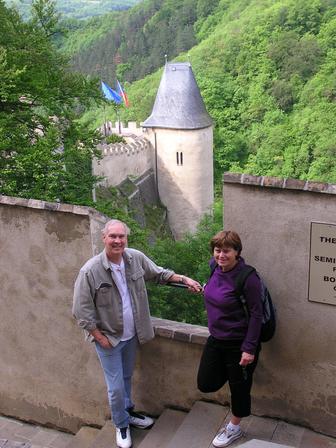
Our group in Karlstein
After the castle tour, we started our way South. We planned to stay an other night in the Czech Republic somewhere in a Spa town.
(http://mapy.atlas.cz)
We choose to go to Frantiskovy Lazne. Before getting to the city, we went to see an interesting geological site: SOOS nature reserve.
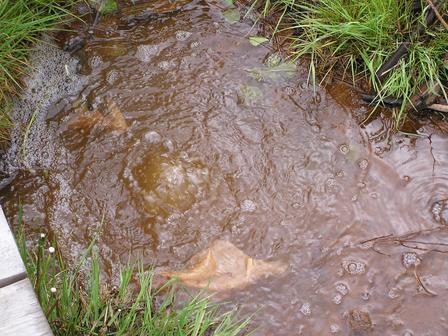
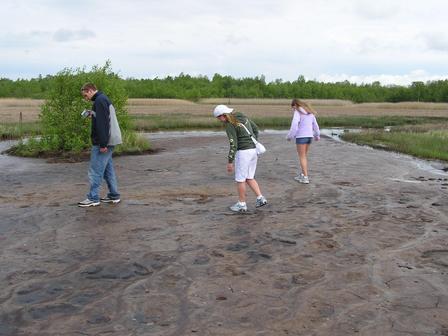
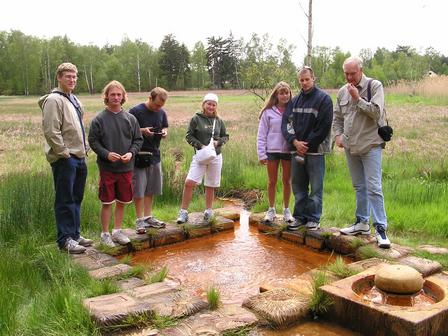
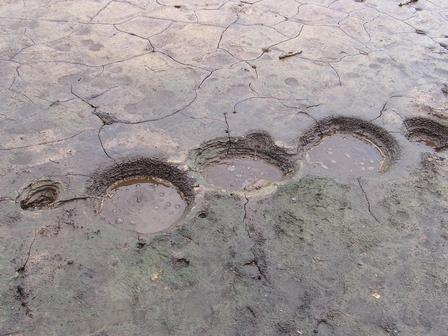
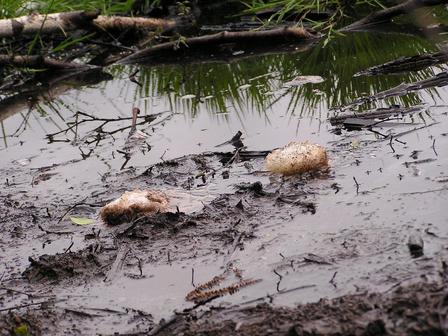
Frantiskovy Lazne
Later that night we were walking on the streets of Frantiskovy Lazne and tried to figure out information about the "spas" of the area, what are they good for. This is a great site: http://www.franzensbad.as/.
The oldest preserved record of the
acidulous water is from the year 1406. In 1714 there was an inn and spa under one roof
with 14 baths and 12 guestrooms.
The foundation of the spa was initiated by a Cheb citizen and doctor, Dr.
Bernhard Adler (1753-1810). He realized the true value of the treasure springing
from the earth. He cleaned the spring and banned access to it in order to ensure
its hygienic character. However, his initiative was understood by Cheb women
as an attempt to violate their privilege to collect water directly from the
spring. On August 18, 1791 a rebellion of Cheb women broke out and resulted in
the complete destruction of the pavilion in just a few minutes. The emperor sent a commission to Cheb that settled
the problem of the spring’s purity and bottling and also worked out a plan for
the foundation of the spa.
The first ground plan of the spa was designed by Father Gruber, a doctor from
Bilina. At that
time it was called the Village of Emperor Francis (Kaiser Franzendorf) and was
renamed Kaiser Franzensbad in 1807.
Construction of the spa began almost immediately. The first buildings of the
future spa, including the Francis spring pavilion and the Cultural House, were
erected and by the end of 1794 ten more houses were built by Father Gruber. The
construction of the spa lasted roughly until 1890 and has retained its form
since that time.
At this site we can also learn about the usage of the spring water. I copied just the introduction part here, but if you want to read more about it, the site again is: http://www.franzensbad.as/
Carbonic procedures:
Carbon dioxide is the most important component of these procedures. It is
absorbed by the skin, influences the periphery of nervous system and causes
dilatation of contracted vessels.
As a result, circulation of blood in organs is improved, blood pressure
decreases and the nervous system is more relaxed.
Carbonic procedures are used in cases of cardiovascular disorders.
Medicinal mud procedures:
The effect of mud procedures is based on the special quality of mud to
accumulate and gradually transmit heat. That is why the temperature of mud baths
can be much higher than the one of mineral water bath without causing any
discomfort to the patient. It has positive effects on circulation, metabolism
and chronic inflammations.
The acidulous character of mud destroys microorganisms including moulds.
Medicinal mud procedures are used mainly for the treatment of disorders of the
motor system and gynecological disorders.
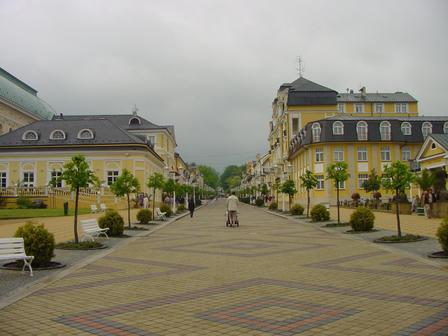
Main Street
At night we walked on the streets, and had a wonderful, very cheap dinner in one of the restaurants. Slept in a nice little hotel, which was very cheap, and gave us excellent breakfast.
(In this section, if otherwise not stated, the pictures were taken by, and the property of Dr. Anna Balog-Szabo)